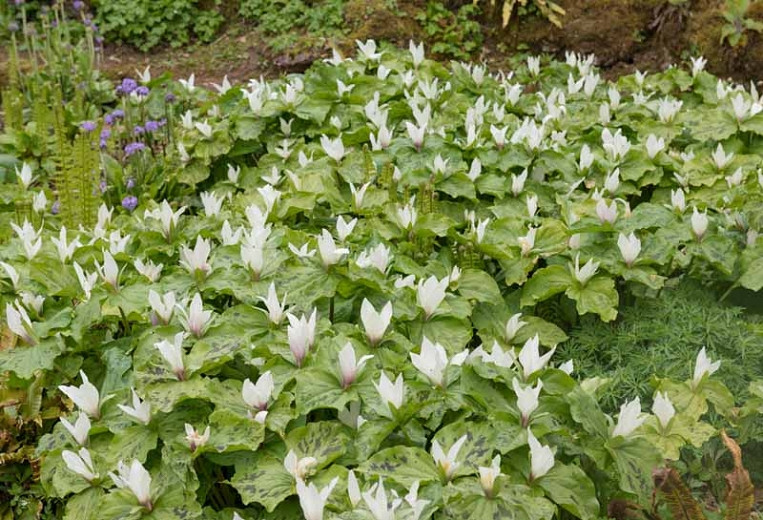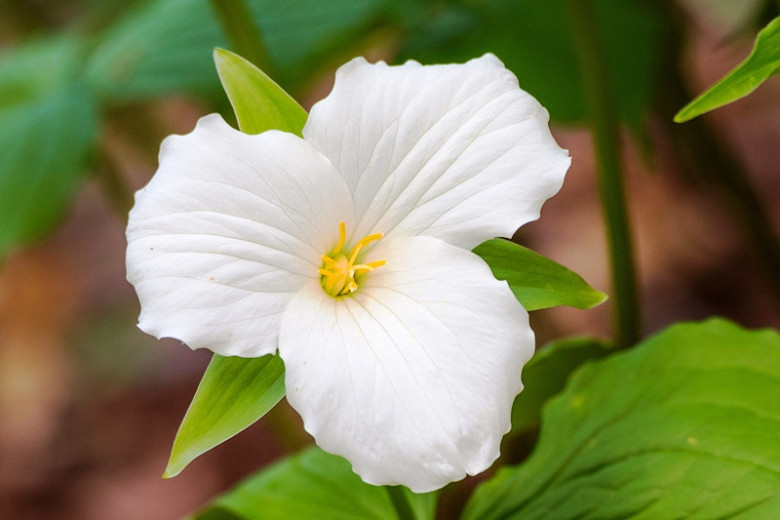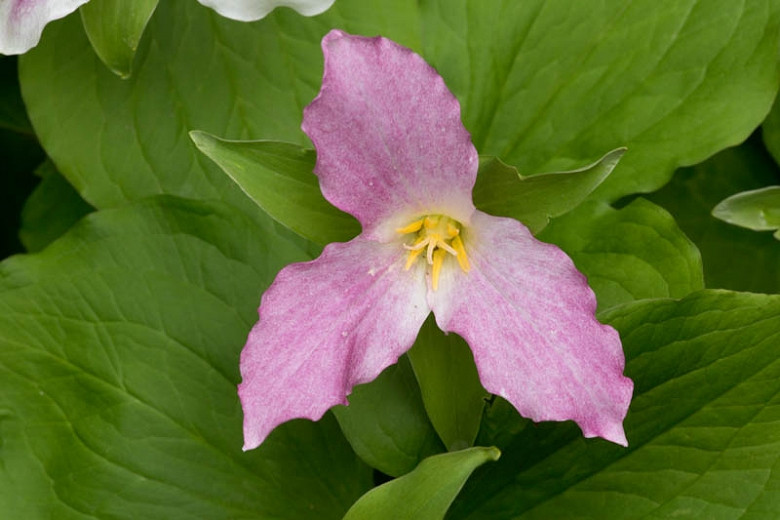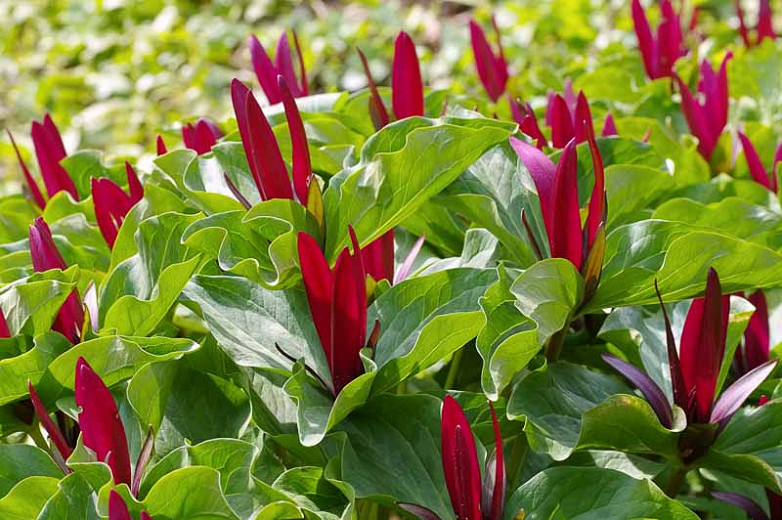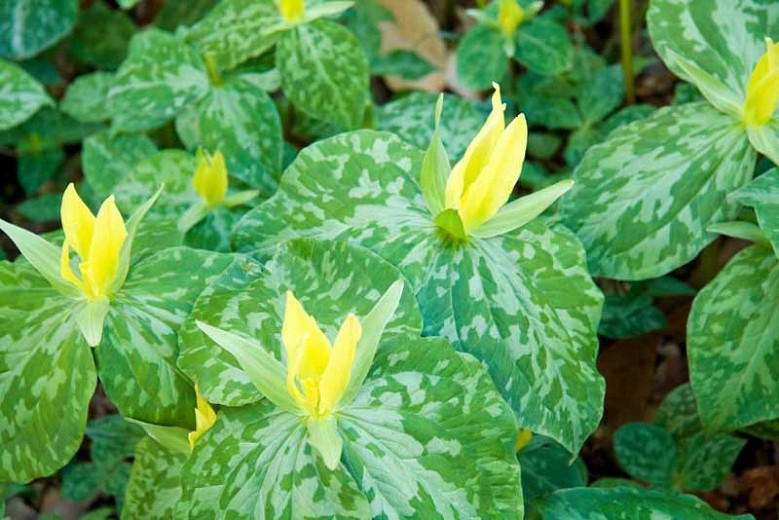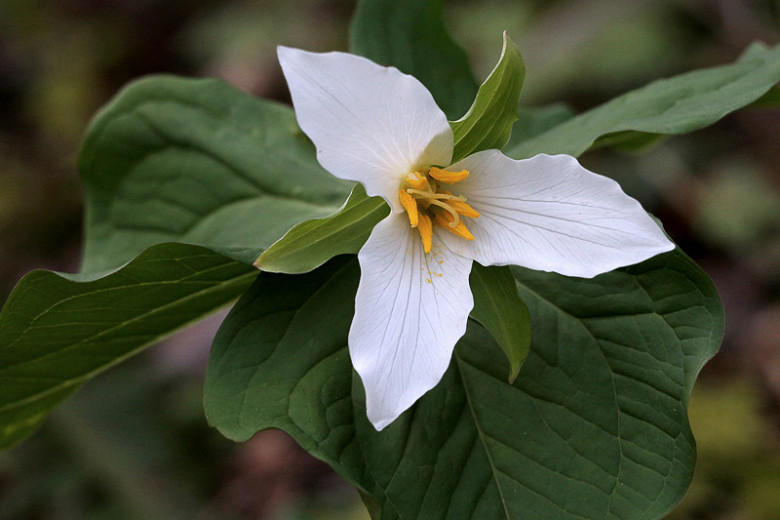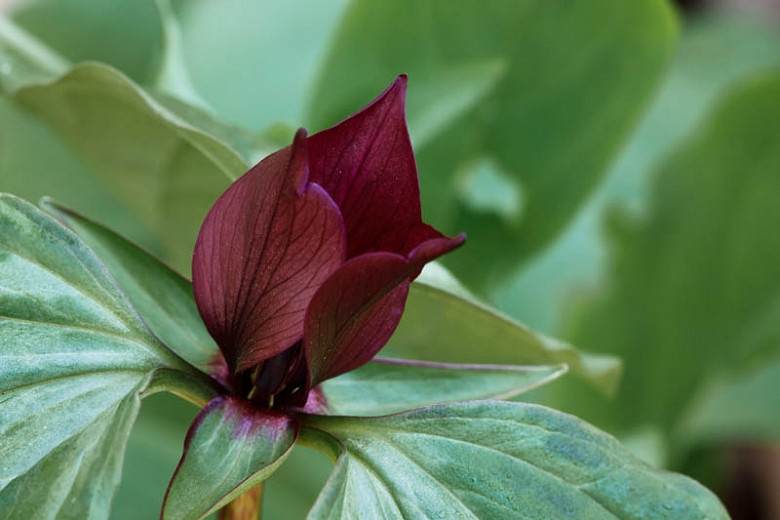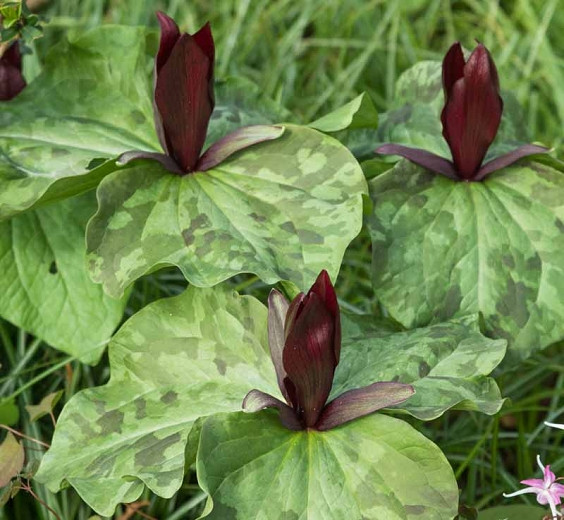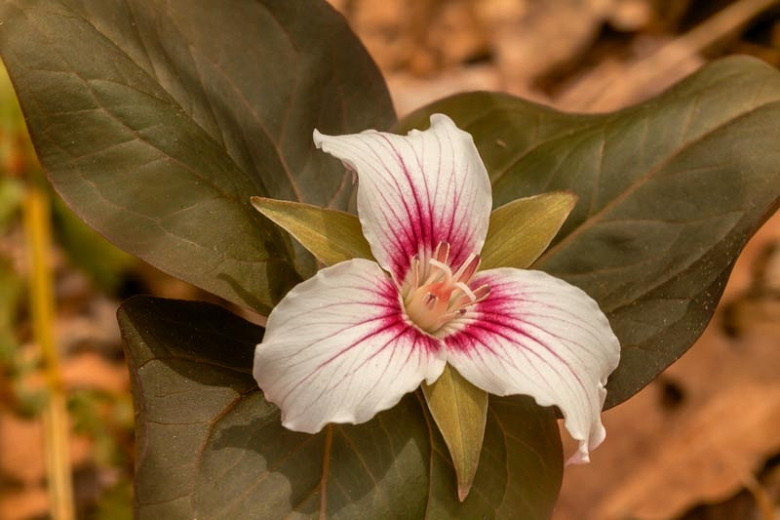Trilliums
One of the most beloved of the spring woodland wildflowers, Trilliums (Wake Robin) are remarkable rhizomatous perennials with unbranched stems, noted for the perfect symmetry of their leaves, petals and sepals which all come in groups of three, hence the genus name. Their blooms can be either showy or discrete, their foliage handsomely mottled. Jewels of the shade garden, they are fully hardy and will blossom and blend beautifully with other woodland plants.
One of the most beloved of the spring woodland wildflowers, Trilliums (Wake Robin) are remarkable rhizomatous perennials with unbranched stems, noted for the perfect symmetry of their leaves, petals and sepals which all come in groups of three, hence the genus name. Their blooms can be either showy or discrete, their foliage handsomely mottled. Jewels of the shade garden, they are fully hardy and will blossom and blend beautifully with other woodland plants.
- Members of the Liliaceae (lily) family, the fascinating genus Trillium includes 43 species, most of them are native to various regions of the United States.
- There are 2 main forms of Trilliums: the sessile species (the flower is stalkless and sits directly on top of its whorled leaves) and the pedicellate species (the flower is raised on a short stalk and carried above the leaves). Sessile trilliums usually have mottled foliage, while pedicellate trilliums have showier flowers.
- Trilliums are spring ephemeral flowers. They grow from a thick rhizome, emerging in early to mid spring, flowering in mid spring to early summer, setting seed and dying down in midsummer. They are beautiful to look at but are also extremely fragile. Picking them seriously damages the plant by preventing the leaf-like bracts from producing food for the next year, often effectively killing the plant and ensuring none will grow in its place.
- Easy to grow, Trilliums are slow to develop and increase but they are extremely long-lived. Their seeds are naturally dispersed by ants and they can form large drifts over the years.
- Trilliums perform best in part shade or full shade, in deep, humus-rich, acid to neutral, moist, well-drained soils. Keep well watered during dry weather in spring and early summer. Although Trilliums are moisture lovers, they do not tolerate waterlogging. They do not thrive on heavy, wet clay soils. Mulch in fall with leaves.
- Trilliums are a sight to behold when massed in shaded woodland gardens, naturalized areas, wildflower gardens or rockeries.
- Because Trilliums go dormant by midsummer, pair them with other shade-loving perennials that will look good the rest of the gardening season and share their place until they reappear the following spring. Trilliums look lovely planted with bulbs, spring-blooming shrubs, sedges and ferns.
- Generally disease free, Trilliums require little maintenance. Other than being browsed by deer, they suffer from no serious pest problems.
- Trilliums are readily propagated by division. Plants can be grown from seed, but it can take up to two years for fresh seed to germinate and another five to seven years for plants to bloom. Growing plants from cuttings has limited success.
- The best time for planting is late summer or early fall as it gives the rhizomes time to establish good root systems before the following growing season.
Guide Information
| Hardiness | 3 – 9 |
|---|---|
| Plant Type | Perennials |
| Plant Family | Trillium – Wake Robins |
| Exposure | Partial Sun, Shade |
| Season of Interest | Spring (Mid,Late)Summer (Early) |
| Water Needs | Average |
| Maintenance | Low |
| Soil Type | Chalk, Loam, Sand |
| Soil pH | Acid, Neutral |
| Soil Drainage | Moist but Well-Drained |
| Landscaping Ideas | Beds and Borders, Ground Covers, Underplanting Roses and Shrubs |
| Garden Styles | Gravel and Rock Garden, Informal and Cottage, Prairie and Meadow |
